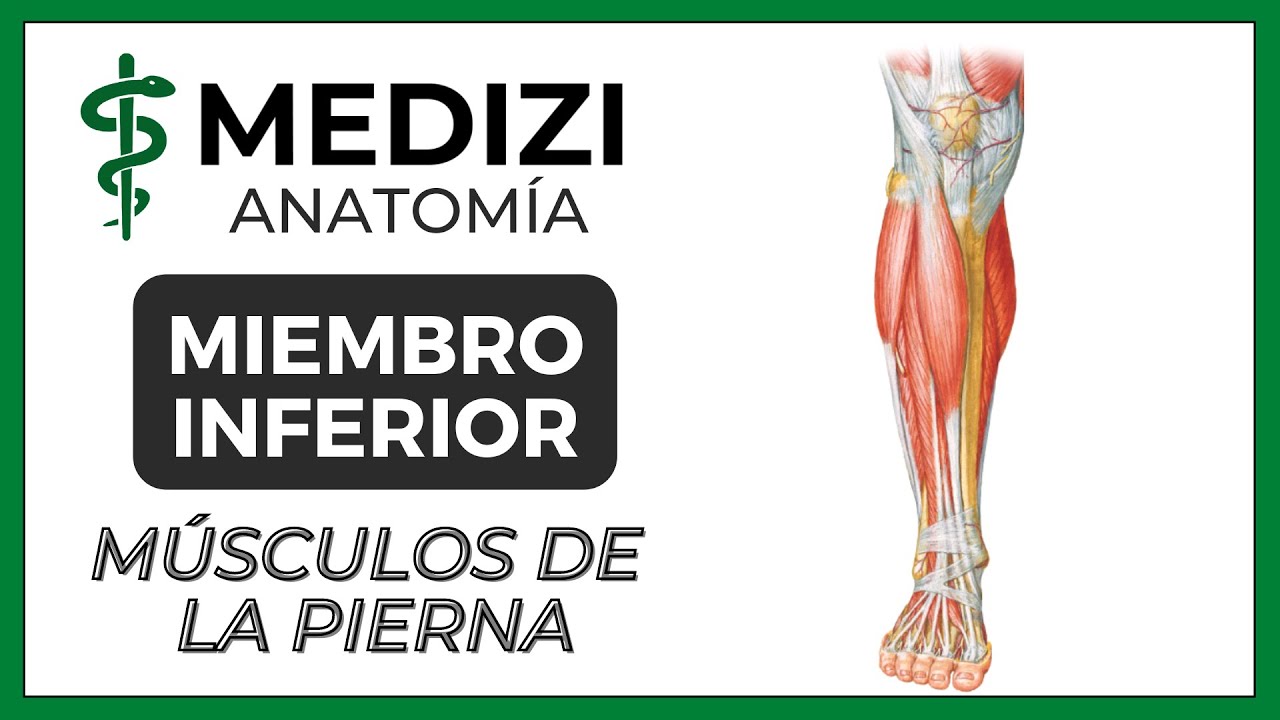🥇 MÚSCULOS DE LA PIERNA. Compartimientos (Anteriores, Laterales y Posteriores
Summary
TLDREste video educativo, presentado por Juan José Sánchez, ofrece una visión detallada de la miología del miembro inferior, centrando la atención en los músculos de la pierna. Se explica la importancia de comprender la anatomía de los huesos tibia y fibia para entender la función de los músculos. Se detallan los compartimentos de la pierna y se describen los músculos del compartimento anterior, incluyendo el tibialis anterior, extensor hallucis longus y otros, señalando sus orígenes, inserciones y funciones. Además, se menciona la innervation de los músculos y se invita a los espectadores a suscribirse y seguir el canal para más contenido anatómico.
Takeaways
- 🦿 El vídeo de Juan José Sánchez se centra en la miología del miembro inferior, específicamente en los músculos de la pierna.
- 📚 Se menciona que los músculos de la región del tobillo se discuten en un vídeo anterior, mientras que los del pie se tratarán en un próximo video.
- 🗺 Se describe la fascia del tobillo, también conocida como aponeurosis, que envuelve los músculos de la región y es una continuación de la fascia lata del muslo.
- 🔍 Se enfatiza la importancia de comprender la anatomía ósea del tobillo y del pie para entender la inserción y función de los músculos.
- 🏋️♂️ Se explica que los músculos del compartimento anterior de la pierna realizan movimientos de dorsiflexión e inversión del pie.
- 🦾 Se describen cuatro músculos en el compartimento anterior: tibialis anterior, extensor hallucis longus, extensor común de los dedos y el músculo peronéo anterior.
- 🤸♀️ Los músculos del compartimento lateral, compuestos por los peronéos largo y corto, son responsables de la eversión del pie y, en el caso del peronéo largo, también de la plantarflexión.
- 🥾 En el compartimento posterior se encuentran los músculos que realizan movimientos de plantarflexión e inversión del pie, formando el tríceps sural.
- 🧠 La innervación de los músculos de la pierna se basa en compartimentos, siendo la nervadura del compartimento anterior por la nervio tibial anterior, la del lateral por el nervio peronéo superficial y la del posterior por el nervio tibial.
Q & A
¿Cuál es la región del muslo conocida en anatomía?
-La región del muslo también se conoce como la región sural.
¿Qué es la aponeurosis o fascia del muslo y de qué es responsable?
-La aponeurosis o fascia del muslo es una continuación de la fascia lata, la cual se encarga de envolver todos los músculos que se encuentran en esta región del muslo.
¿Cuál es la importancia de estudiar los huesos del muslo para comprender sus músculos?
-Es importante estudiar los huesos del muslo, como el tibia y el fibula, ya que son los lugares donde se insertan estos músculos y son esenciales para entender su función y movilidad.
¿Cuál es la función del tibialis anterior y en qué compartimiento del muslo se encuentra?
-El tibialis anterior es el músculo más anterior del muslo y su función es realizar la dorsiflexión e inversión del pie. Se encuentra en el compartimiento anterior del muslo.
¿Cómo se inserta el extensor de los dedos comunes y qué función cumple?
-El extensor de los dedos comunes se inserta en los tendones que van hacia los dedos laterales, es decir, el segundo, tercero, cuarto y quinto dedo, y su función es realizar la extensión de estos dedos.
¿Cuál es la diferencia entre la inversión y la eversión del pie y cuáles músculos están involucrados?
-La inversión del pie es un movimiento que permite ver el solado del pie hacia el medio, mientras que la eversión es el opuesto. Los músculos que están involucrados en estos movimientos son principalmente los músculos que se insertan medialmente (inversores) y lateralmente (evertores) del pie.
¿Qué músculo se encuentra en el compartimiento posterior del muslo y tiene la función de invertir el pie?
-El compartimiento posterior del muslo contiene el tibialis posterior, el cual tiene la función de invertir el pie.
¿Cuál es la función del tríceps sureo y qué músculos lo componen?
-El tríceps sureo es un grupo de músculos que incluye los dos gemelos o gastrocnemios y el sóleus. Su función es realizar la plantarflexión del pie y ayudar a mantener la postura erguida, siendo también importantes para actividades como bailar, saltar y correr.
¿Cómo se llama el músculo que se encuentra en el compartimiento lateral del muslo y tiene una función incierta?
-El músculo ubicado en el compartimiento lateral del muslo con una función poco definida es el músculo peronéo anterior o también conocido como el tercer peronéo.
¿Cuál es la innervation de los músculos del compartimiento anterior del muslo?
-Los músculos del compartimiento anterior del muslo son innervados por el nervio tibial anterior, que es una rama del nervio isquiático popliteo externo, también conocido como nervio peronéo profundo.
Outlines

Этот раздел доступен только подписчикам платных тарифов. Пожалуйста, перейдите на платный тариф для доступа.
Перейти на платный тарифMindmap

Этот раздел доступен только подписчикам платных тарифов. Пожалуйста, перейдите на платный тариф для доступа.
Перейти на платный тарифKeywords

Этот раздел доступен только подписчикам платных тарифов. Пожалуйста, перейдите на платный тариф для доступа.
Перейти на платный тарифHighlights

Этот раздел доступен только подписчикам платных тарифов. Пожалуйста, перейдите на платный тариф для доступа.
Перейти на платный тарифTranscripts

Этот раздел доступен только подписчикам платных тарифов. Пожалуйста, перейдите на платный тариф для доступа.
Перейти на платный тарифПосмотреть больше похожих видео

Anatomía de Miembro Inferior (MMII) - Músculos de la Pierna

🥇 Anatomía de la RÓTULA. ¡Fácil, Rápida y Sencilla!

🥇 ARTERIAS DE LA PIERNA. (Tibial Anterior y Posterior). ¡¡Anatomía Fácil y Sencilla!!

PIERNA

🥇 MEDIASTINO. Anatomía (Divisiones, Contenido, Limites)

Músculos del miembro inferior, origen, inserción y acción. Parte 2
5.0 / 5 (0 votes)
